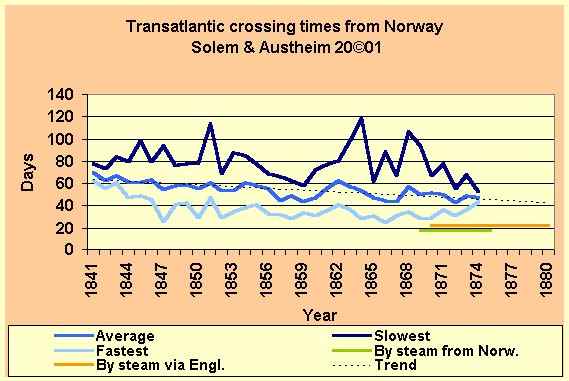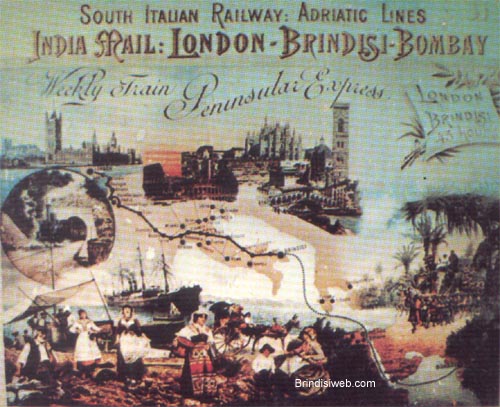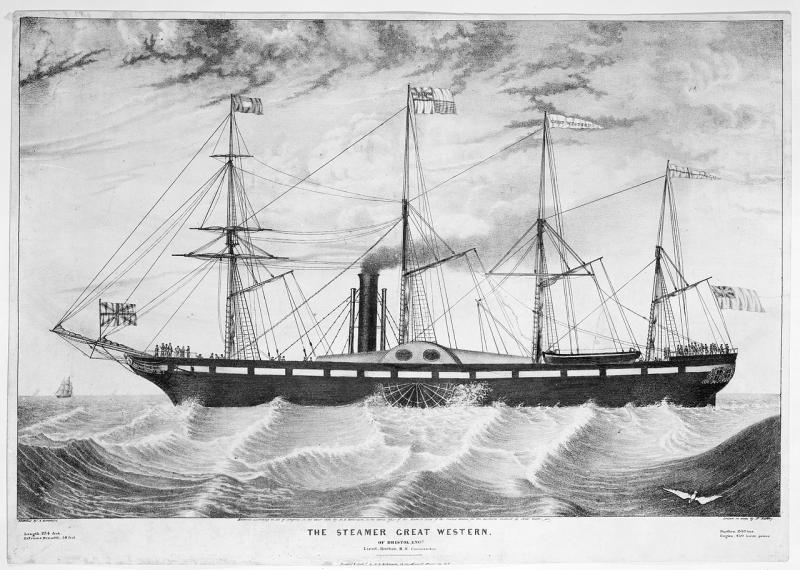
|
History of Ships Clippers & Steamships Jean Vaucher (April 2020) |
- Prehistoric Craft
- Polynesians ( 3000 BCE - 1000AD )
- Viking Ships
- Age of Discovery
- Clippers & Steamers ( 1800 - ...)

Indiamen
At the end of the 18th century, we see faster sleeker vessels that can serve for both war and commerce. The Arniston, a British East Indiamen shown below, is typical of such versatile ships. Built for the Royal Navy, as 56-gun Fourth Rate Ships of the Line, the Arniston measured 175 feet overall length, 43 feet beam, 17 feet draft. It was used as a troop ship. British ships were often built in India with teak hulls better suited to tropical waters.
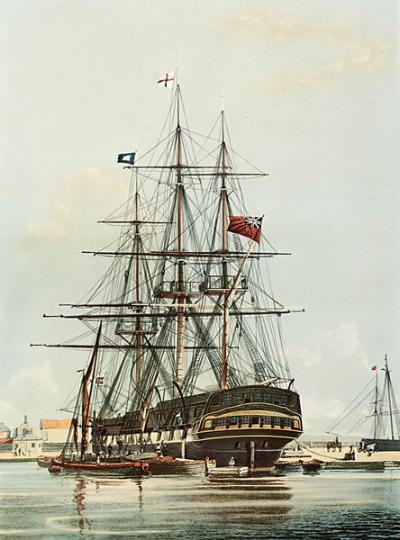
Arniston (1794) |
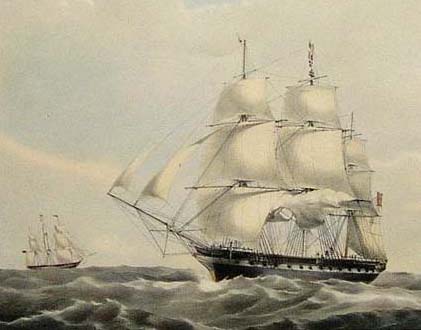
Blackwall Frigate (1837) 950 tons, 150 ft |
Eventually the need for such large armed ships for commerce waned, and during the late 1830s a smaller, faster ship known as a Blackwall Frigate was built for the premium end of the India and China trades. These frigates were also popular for the Opium trade. They also seem to have started a style: black hull with a white stripe.
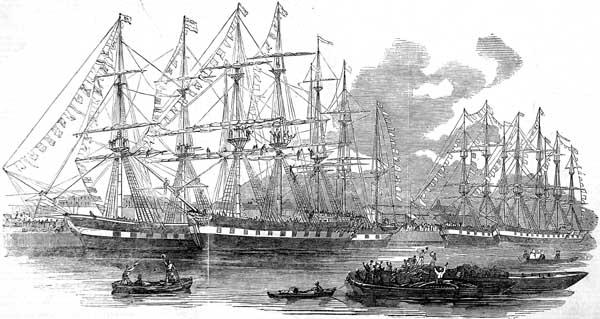
East India Docks (1851) |
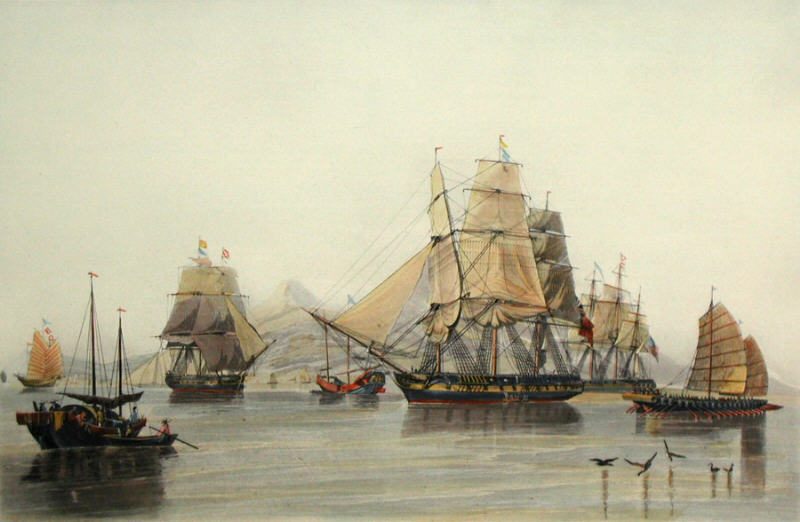
Opium Clippers (1831) |
Ships in Harbour (Formosa, 1857)
Site documenting Sugar & Opium trade
Clippers
Stung by their inability to counter the naval blockade by the British during the war of 1812, the Americans would concentrate on the development of fast sailing ships; the result was the clipper, often capable of reaching 20 knots, in contrast to the 5-6 knots attained by other ships of the day. Clippers would be used for transportation of passengers and valuable cargo like mail, tea or spices.In particular, clippers would compete to bring the season's first tea to London or to New York. The winner would get a higher price for his cargo as well as the glory of winning. The most memorable race took place in 1866, when starting from Fuzhou, after 100 days at sea, Taeping and Ariel raced neck and neck up the Thames and arrived within 20 minutes of each other.
The opening of the Suez canal in 1869, marked the end of the Clipper era. The tea and mail trade was taken over by steamships and most of the clippers transferred to the Australian route, carrying general cargo and passengers to either Sydney or Melbourne, and returning with wool.
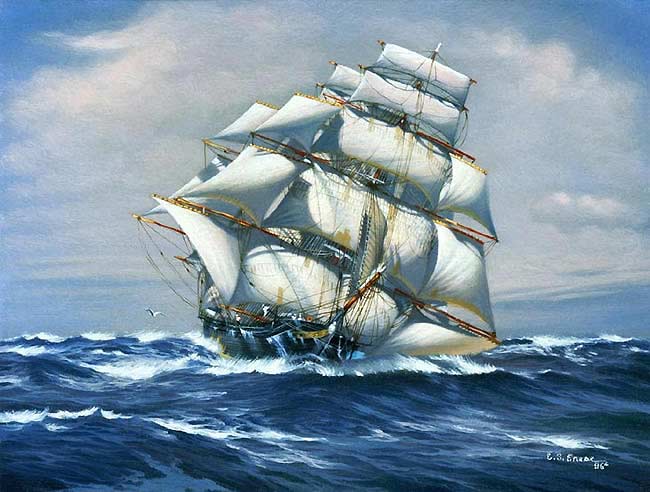
Flying Cloud (US - 1851) printsellers.com |
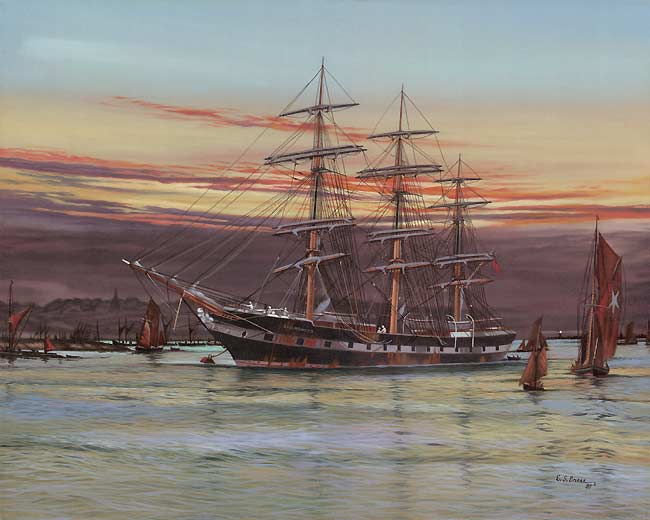
Iron hulled wool clipper ( 1872 ) |
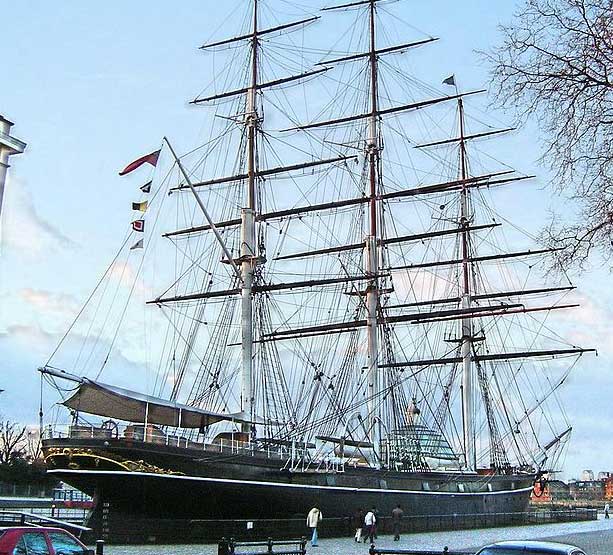
Cutty Sark (1869) |
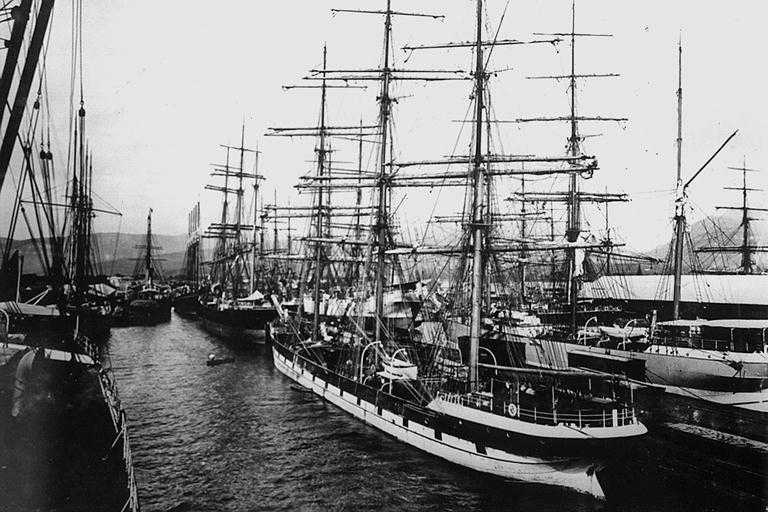
Clippers in Honolulu harbour |
In the heyday of clippers (1840-1860), many sailing records were set for voyages between distant ports. There are a dozen recorded cases of clippers travelling over 400 nautical miles in 24 hours; almost exclusively by US ships. On longer routes, clippers would average 150 nautical miles /day and 200 nm/day would set records. In contrast, modern records for the 21,760 non-stop round the world races (starting in England or France) is 51 days on a 120 foot catamaran for an average of 427 nm/day - set in 2005.
| Clipper Sailing Records | |||
|---|---|---|---|
| Route | Distance
approx. |
Duration | Comments |
| China - London | 16,000 nm
(nm = Nautical Miles) |
90 days | US Witch of the Wave (1852) |
| 99 days | 1866 Tea Race: Taeping & Ariel finished 20 min apart
161 miles/day, 6.7 knots |
||
| New York - San Francisco | 16,000 nm | 120-140 days
average |
record: Flying Cloud: 89 days
(best average: 170 nm/day) |
| San Francisco - Boston | 76 days | 200 nm/day
Northern Light (1853) |
|
| New York - Macao
Macao - New York |
21,000 nm
(NY-China) 14,225 nm (return) |
119 days out
75 days return (194 total) |
Sea Witch (US), 1849
Via Cape Horn to Valparaiso (6 kn), to Macao (8.5 kn) return via Cape of Good Hope ( 7.9 knots) |
| San Francisco - Hong Kong | 6,100 nm | usual: 45 days
record: 33 |
average: 135 nm/day, 5.6 knots |
| Liverpool - Australia
and back |
29,000 nm
16,000 nm out and 13,000 nm back |
usually
90 days each way |
160 nm / day |
| 133 days | James Baines (1855), 215 nm/day | ||
| Liverpool - Melbourne | 16,000 nm | 67 days | Red Jacket (1854) |
| NY - Valparaiso | 10,500 nm | 69 days | Sea Witch (1849) |
References:

Orange II Round the world in 51 days (24 knots) |

Oracle (America's Cup 2013 winner) - 44 knots - |
| Catamarans | |
Age of Steam
Around 1830, steam engines appear on ships as adjuncts to sails. At first the engine is connected to paddle wheels on the side; but within 15 years, screw propellers will be found to be superior both in power and economy. In parallel, iron will take over from wood for the hulls and the spars.
Sailing vessels will continue to be used into the 20th century: wind being more economical than coal for bulk cargo. Lacking a global network of coaling stations, US warships would rely on sail until 1890.
But for rapid reliable delivery of mail and passengers, steamers like the Great Western would take over on the Atlantic run starting in 1840.
Side-wheel Steamers
|
Great Western (1837)
Isambard Brunel's first ship design
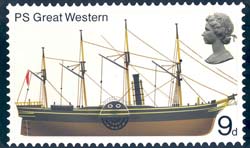
|
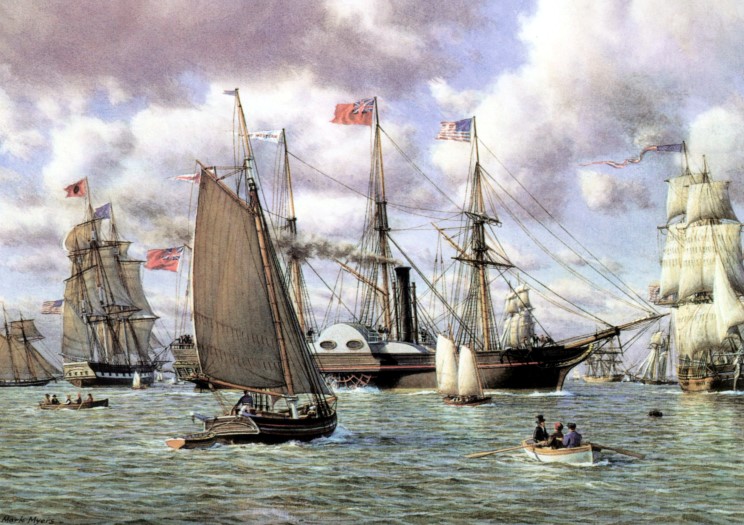
© www.cotswolds.info |
|
Great Eastern (1854)
Brunell's ship used in 1865 to lay the first successful transatlantic telegraph cable (2500 miles) Shown here loading cable |
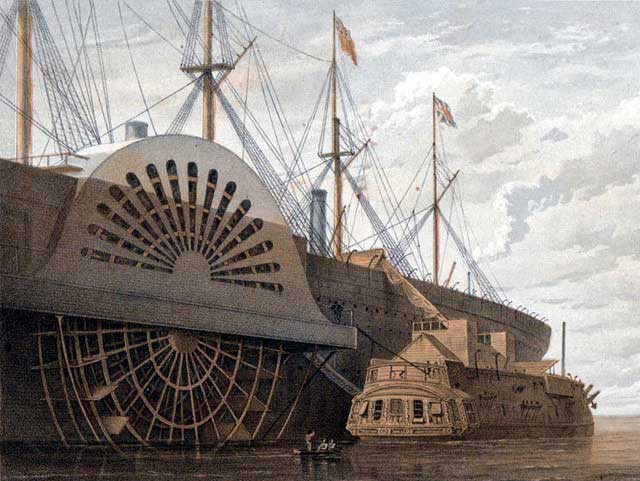
© National Maritime Museum, London |
|
USS Mississippi (1841)
Sidewheel Steamer
|
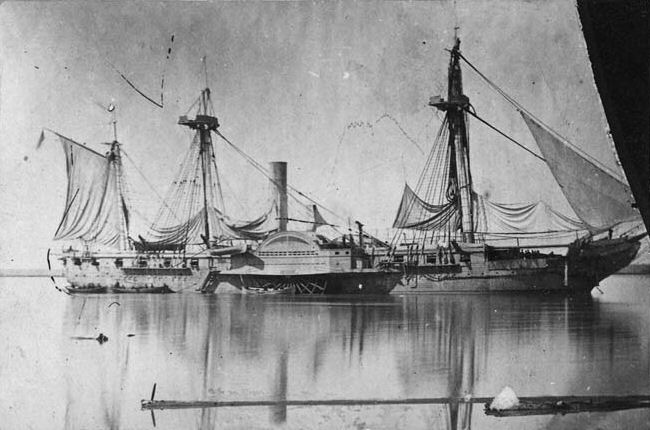
|
Yang Tse GunBoat (1900)
|
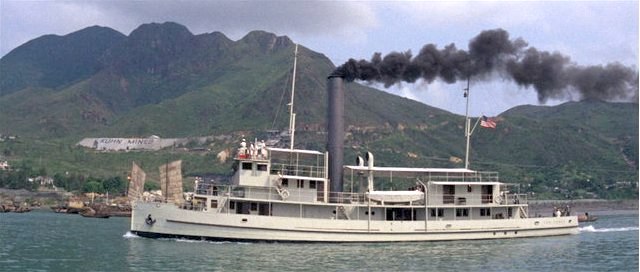
From D. Ancove Site Canonnières de Chine |
Because of their challow draft, side-wheel gunboats will be used on China's rivers well into the 1920's. The fictional gunboat San Pablo in the Steve McQueen movie, The Sand Pebbles, sails up the Yangtze during China's civil war in 1927.
Propeller driven Ships
Launched in 1843, the SS Great Britain is the first ocean-going ship to have an iron hull and a screw propeller and for a time, it was the largest vessel afloat. She originally carried 120 first-class passengers, 132 second-class passengers and 130 officers.In 1850, France will build the first battleship specifically designed for steam. It will also use a propeller but still retain sails for economical long-range sailing.
Great Britain (1843)
- Photo, ca. 1870 - |
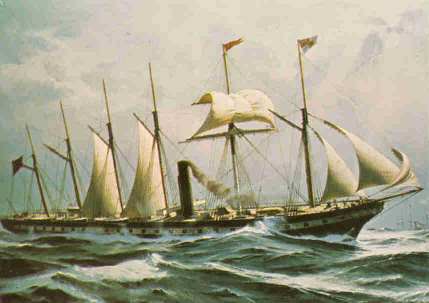
Image from the Merchant Navy Assoc. site |
Le Napoléon (France 1850)
|
.jpg)
|

Shanghai (1873)
|
|
Warships
During the 19th c, warships will move from sail to coal-fired steam propulsion which provides speed, manoeuvrability and direct routes independent of prevailing winds. Unfortunately, a steam navy requires a network of secure coaling stations. England with its global empire could rely on stations around the world: Gibraltar, Aden, Ceylon, Singapore, Hong Kong, Australia, St-Helena, etc. The United States, lacking such an empire, largely stuck with sailing ships in the decades following the Civil War; and the few ships with steam engines, like Admiral Perry's Mississippi used them only as auxiliary power.Coastal vessels close to refueling bases could use steam and many such vessels would be used during the US Civil war. The most notable example being the Confederate Ramship Virginia which engaged five major Union (sail) warships blockading Norfolk Harbour, sinking the US Cumberland and US Congress and running others aground.
| Evolution of Warships | |
|---|---|
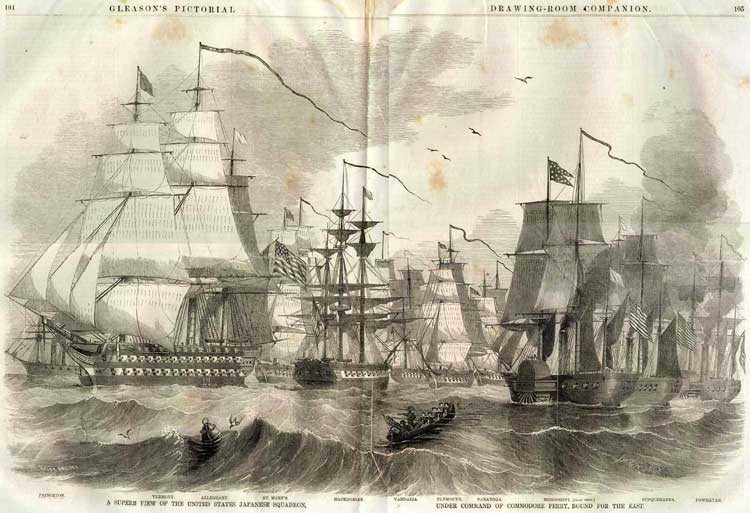
Perry's fleet to Japan (1852)
|
|
| US Civil War | |
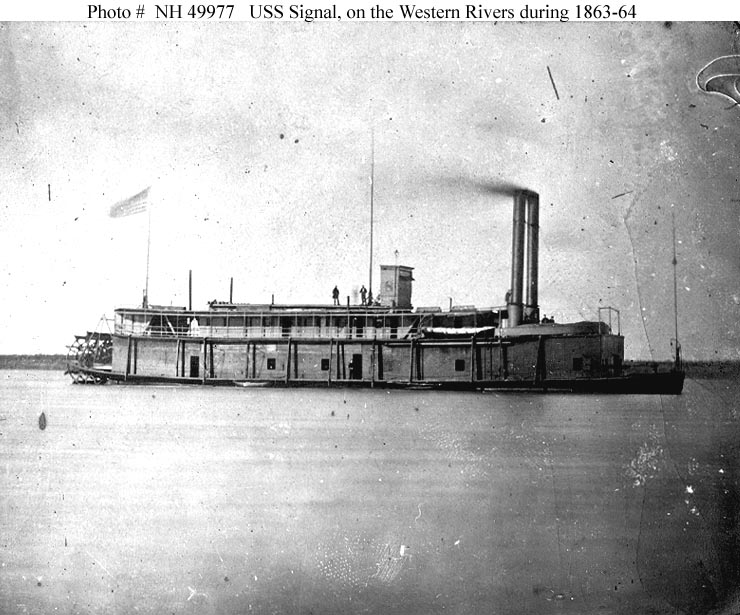
Mississippi Paddle-wheel Gun-Boat |
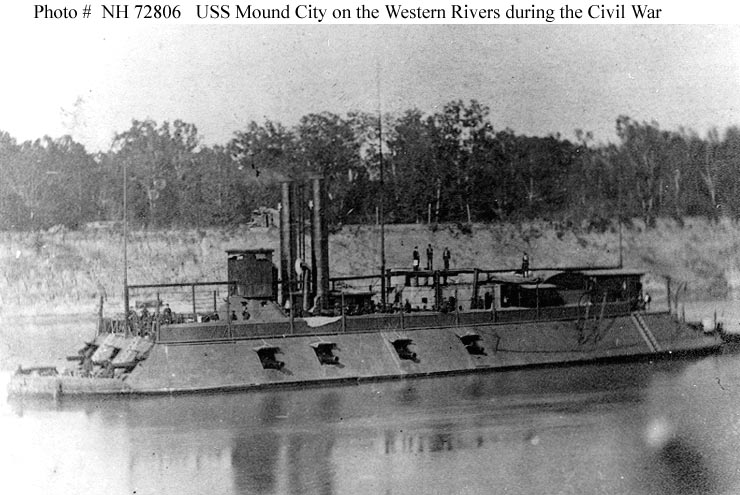
Civil War (1860s) Submarine-like design of Monitors and Ram ships |
| Post Civil War | |
|
USS Gunboat (1887)
Steam & sail 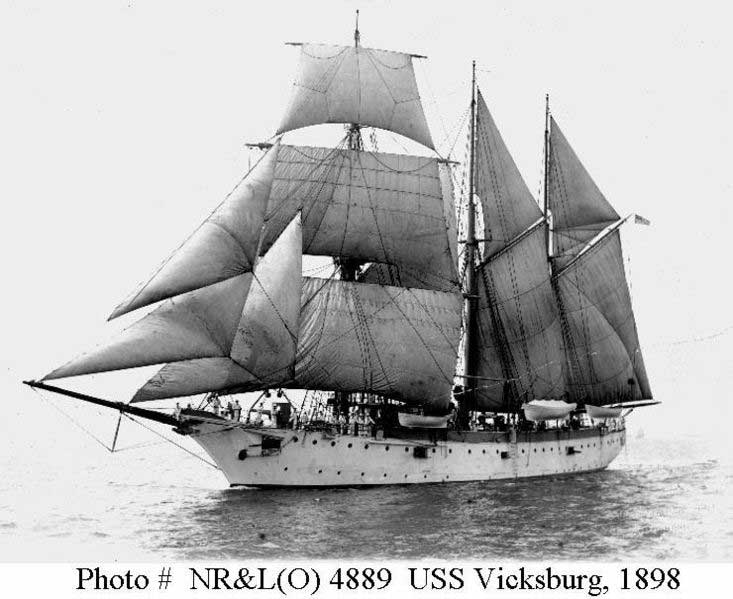
|
US Cruiser (1889) - all steam - 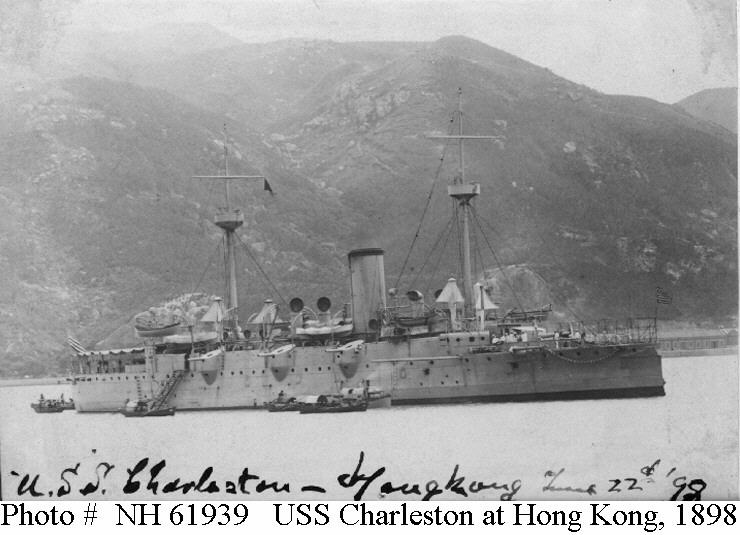
|
Passenger Travel
The 19th century is marked by massive emigration from Europe to the Americas and to Australia. Initially, immigrants are carried on sailing ships but, depending on the weather, the trip to America can take over 3 months at sea. Steamships with the advantages of speed, regularity and comfort take over after 1850. The following graph shows typical travel times accross the Atlantic.
|
|||||||||||||||||||
Until 1840, trips to the Orient (India or China) were done under sail and would take 5 months at best. Then Thomas Waghorn developped a passenger route to India which combined steamers passages with land legs for even faster trips. In 1850, using his route, it is possible to go from England to Madras in 40 days: taking a train to Brindisi - at the heel of Italy, sailing to Egypt, goind overland to Suez before taking another boat to India. After the opening of the Suez Canal in 1869, mediterranean steamships could go all the way to Asia, but sail boats had to go around the Cape (4000 miles more).
Similarly, in the Americas, the usual route from New York to San Francisco sailing around Cape Horn would take 4 months on average. But during the gold rush (1848–1855), one could use a faster hybrid route to get to California in 25 days: 9 days to Panama, 1 day by land accross the isthmus and 15 days sailing to San Francisco.
The photogaphs below contrast the luxurious living accomodations for 1st class passengers and those in steerage.
| Luxury Passenger Liners | |
|---|---|
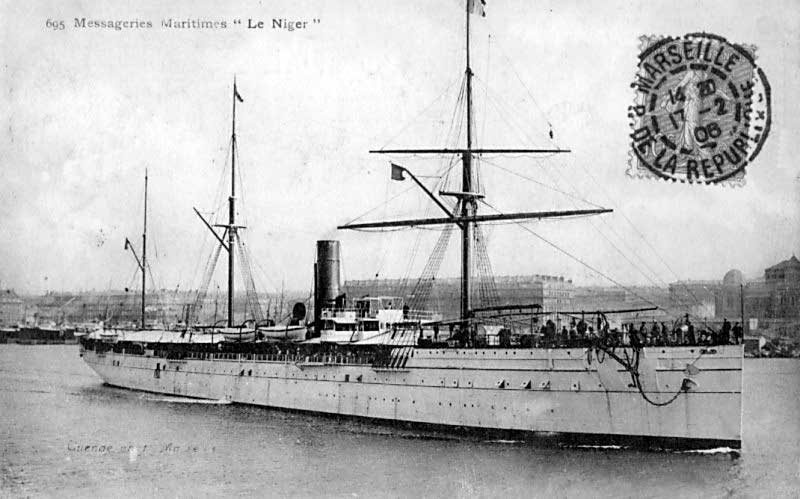
Niger (1871) Messageries Maritimes (France) |
|
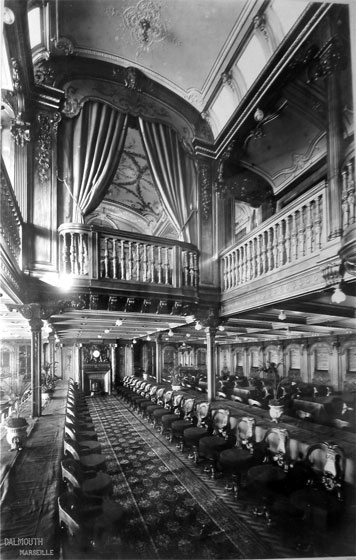
|
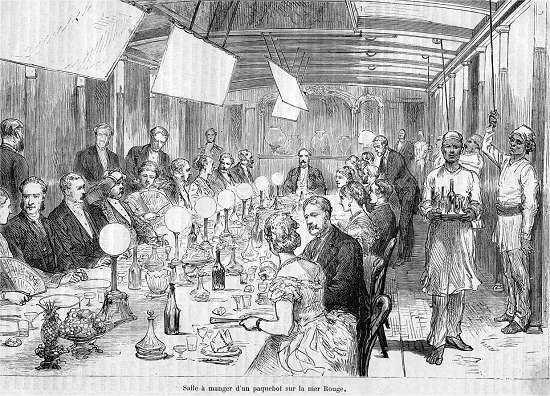
|
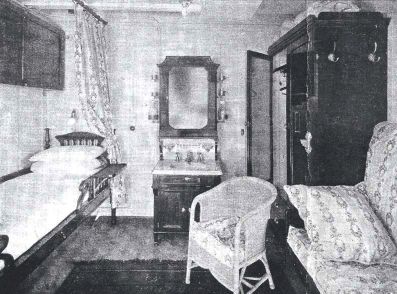
|
|
| Emigrant Accomodation | |
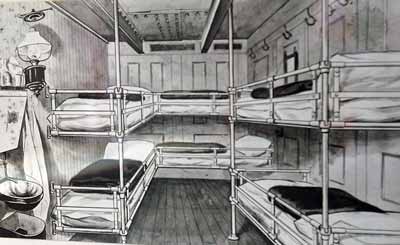
Emigrant Cabin on Steamship |
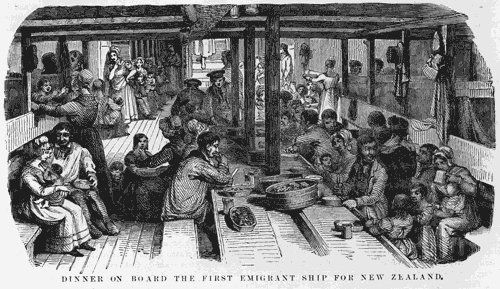
Dormitory-style Sailing ship steerage |
Round the World
In 1869, the Transcontinental Railroad accross the United States was completed (although trains had to be ferried accross the Mississippi) and it was possible, in 1873, for Jules Verne to envisage going around the world in 80 days
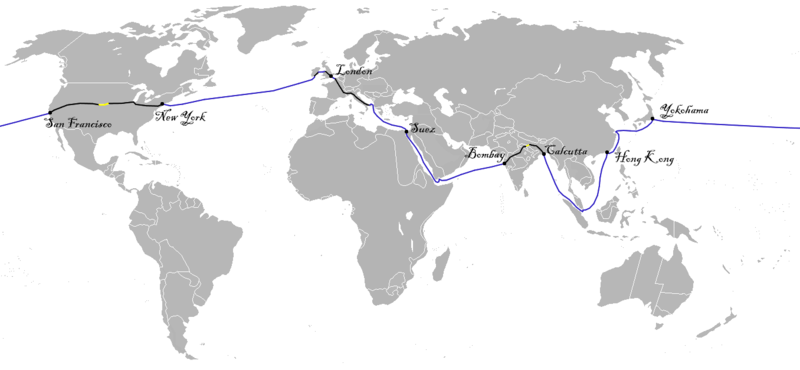
Vernes' Around the World in 80 days Itinerary
Around the World in 72 Days
In 1888, Nellie Bly, an american journalist, suggested to her editor at the New York World that she take a trip around the world, mimicking Jules Verne's book Around the World in Eighty Days. On November 14, 1889 she left New York on her 24,899-mile journey which finished 72 days later, a world record at the time. Her trip differed from the Verne itineray in that she didn't cross India by train but sailed via Ceylon. Traveling alone, she became a role model of independence for women everywhere.
New York to Southampton:
3041 miles @16.5 mph
Augusta Victoria, Hamburg Line
- Launched 1889
- Speed of 18-19 knots.
- Accommodation: 400-1st, 120-2nd
and 580-3rd class passengers
- Crew: 245
London - Brindisi:
1450 miles @27 mph
India Mail Train
Brindisi - Colombo
4417 miles @14.5 mph
SS. Victoria P&O Lne
Colombo to Hong Kong:
3096 miles @13 mph
SS. Oriental P&O Line
Hong Kong to Yokohama:
1600 miles @12 mph
SS. Oceanic
Yokohama to San Francisco:
4525 miles @13.6 mph
SS. Oceanic
San Francisco to New York:
4525 miles @35 mph
train
|
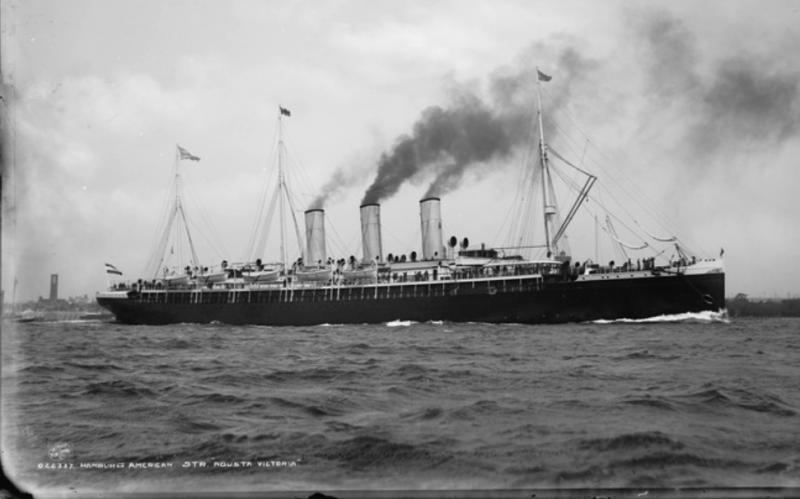
Augusta Victoria Hamburg Line
|
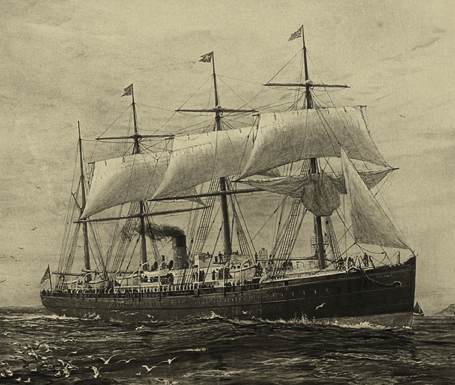
Oceanic, Hong Kong to San Francisco |
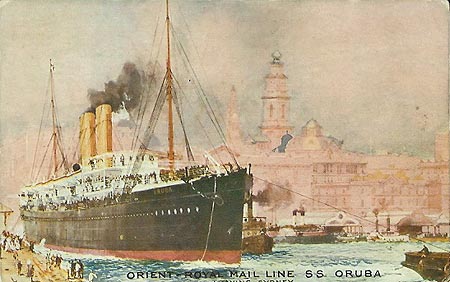
India Mail Ship |
Overall Nellie Bly travelled 21,740 miles in 1,732 hours (72 days) for an average speed of 22.5 mph. Excluding delays and layovers, speed would be 29 mph.
Return to Early Sailing Ships
Jean G. Vaucher
WWW : www.iro.umontreal.ca/~vaucher/
